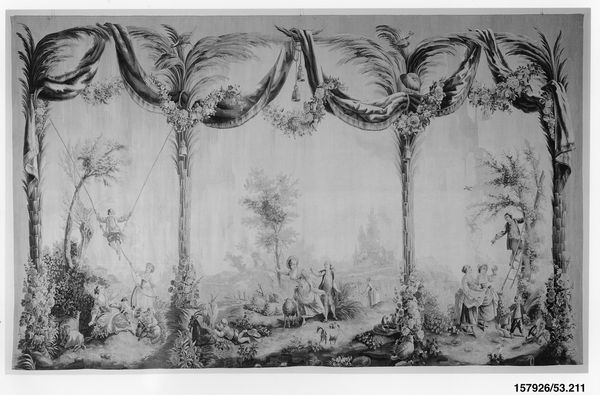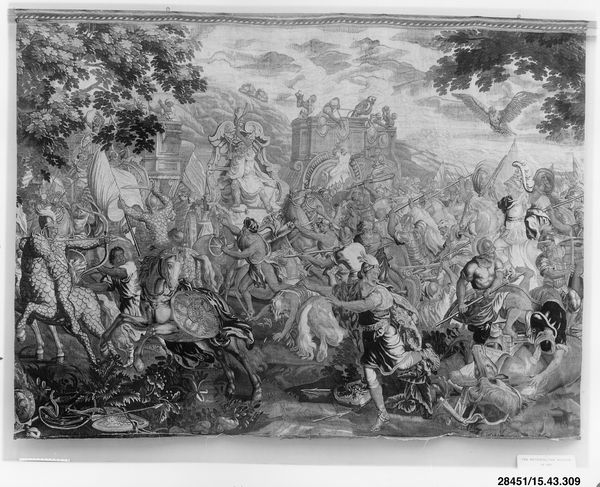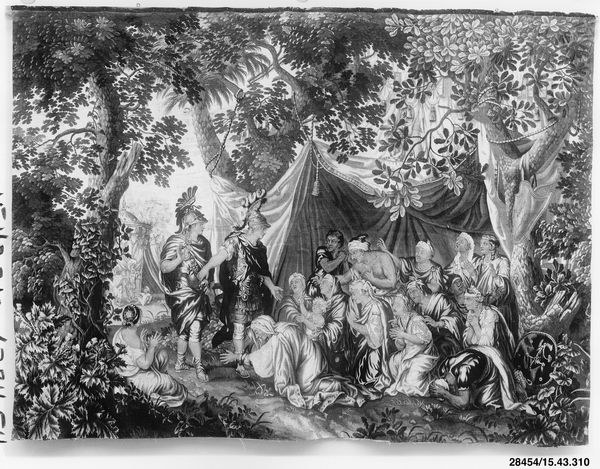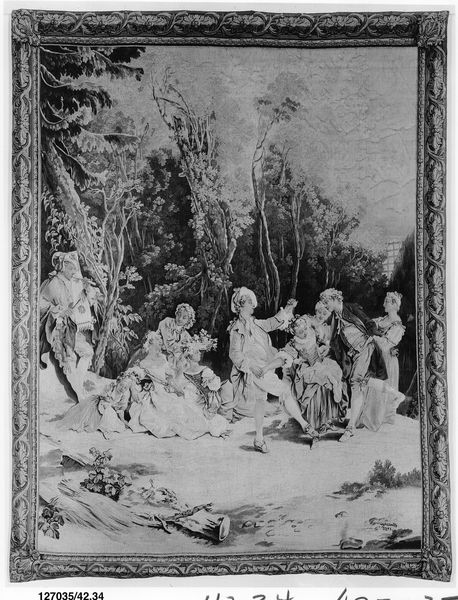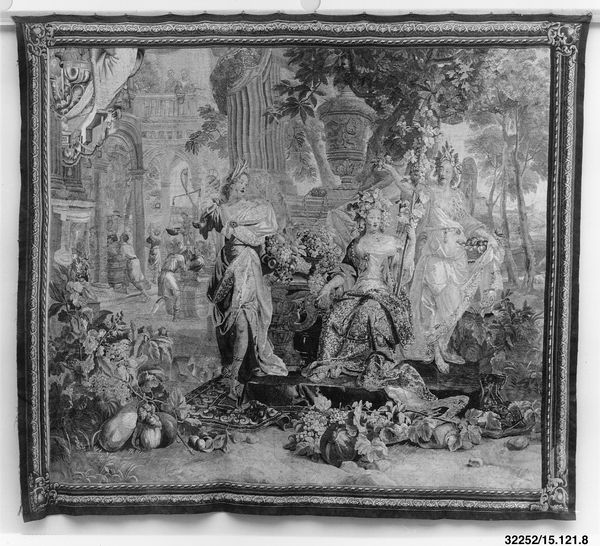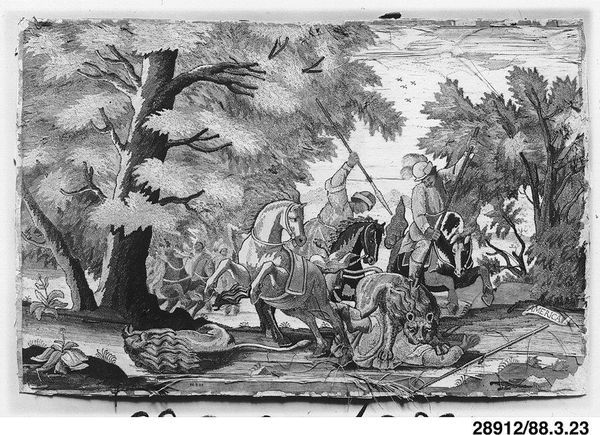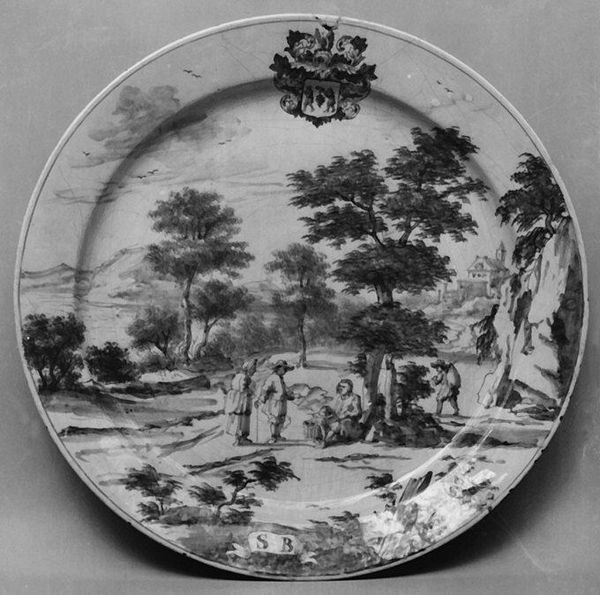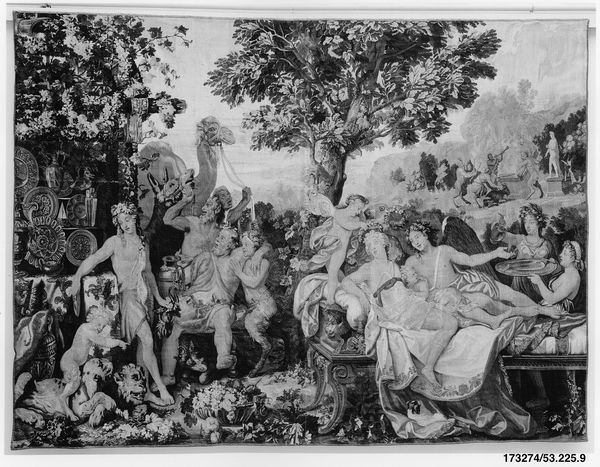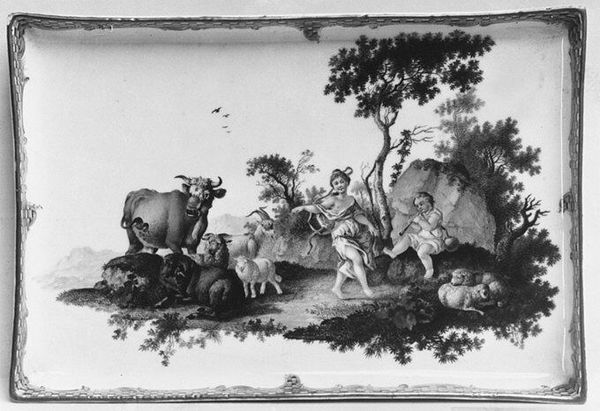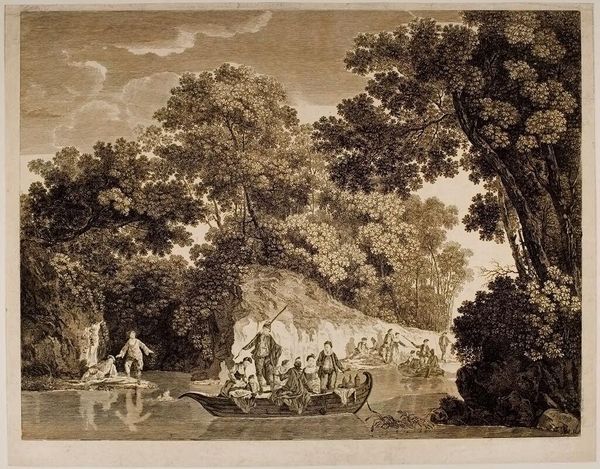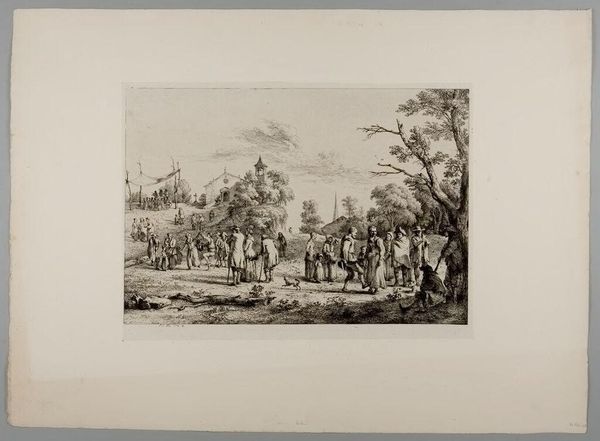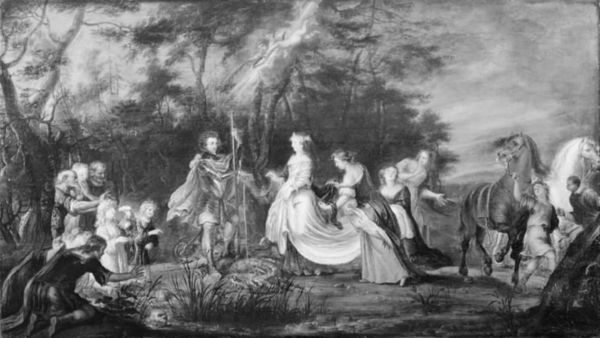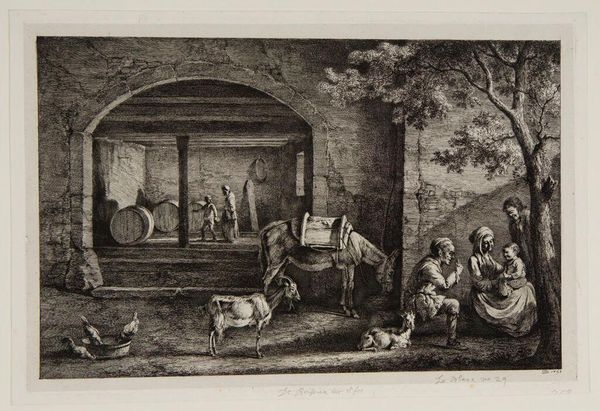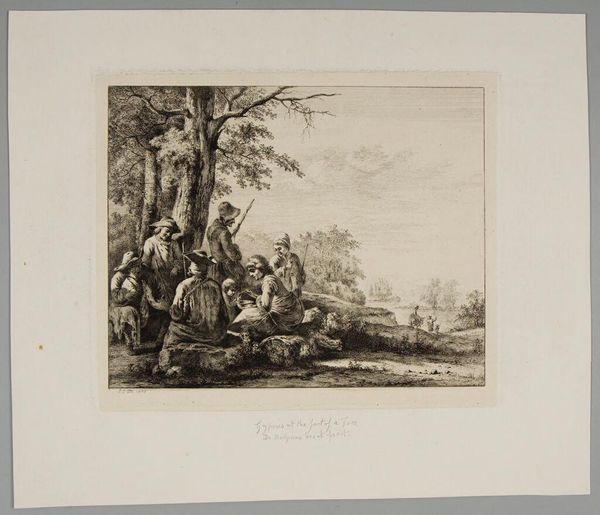
weaving, textile, sculpture
#
baroque
#
sculpture
#
weaving
#
landscape
#
textile
#
figuration
#
sculpture
#
horse
#
genre-painting
#
history-painting
#
decorative-art
#
realism
Dimensions: 10 ft. 8 in. × 15 ft. 8 in. (325.1 × 477.5 cm)
Copyright: Public Domain
Curator: This magnificent weaving, "Stag Hunt," now hanging here at The Met, was brought to life at the Beauvais manufactory between 1685 and 1699. Editor: It strikes me as a landscape caught in a frozen scream. There's this almost desperate energy in the chase, a frantic beauty. Curator: Indeed. Stag hunts, especially those depicted in tapestries, were not merely about sport; they were performative displays of power and nobility. Notice how the riders dominate the scene. Hunting was a privilege reserved for the elite, wasn’t it? Editor: Exactly, and what seems like mere recreation had much broader implications. Think about access to resources. Hunting laws were often deeply intertwined with controlling land use and denying commoners access to food and resources. Curator: That's a crucial point. The imagery becomes far richer when seen through that lens. We see not only the pursuit of an animal but also the enforcement of a social order. But there's also a mythological undercurrent, wouldn’t you agree? The stag as a symbol of the wild, the untamed— Editor: And a potent symbol of resistance against imposed order, a theme ever-present in these visual clashes between authority and freedom. And speaking of symbolism, have you noticed the idealized depiction of the riders? They seem untouched by the physical exertion, perfectly poised. It presents this almost superhuman vision of aristocratic prowess. Curator: Yes! Think also about the dogs. Hunting dogs are classic symbols of loyalty, discipline, and the chase, of course. They echo the lord's desires. Editor: These tapestries were integral in shaping and disseminating narratives about power, and even subtly encoding expectations about race, gender, and class hierarchies within the leisure activities depicted. Curator: The cultural memory is rich, for sure. These aren't just beautiful images; they’re potent emblems of historical context. Editor: Right. Context can change everything, reveal unseen truths, or simply deepen what we feel looking at "Stag Hunt." It can prompt the question of whether it can ever be simply beautiful, just decoration, or instead a potent archive of social relations.
Comments
No comments
Be the first to comment and join the conversation on the ultimate creative platform.
